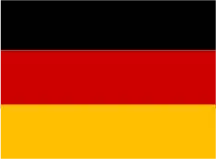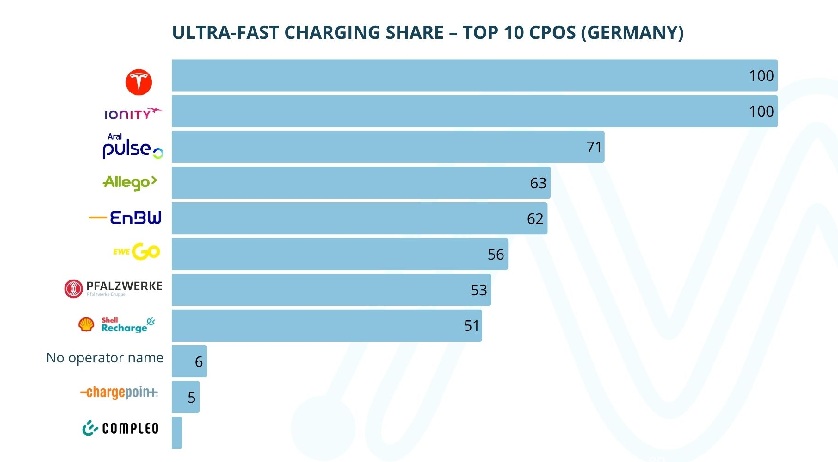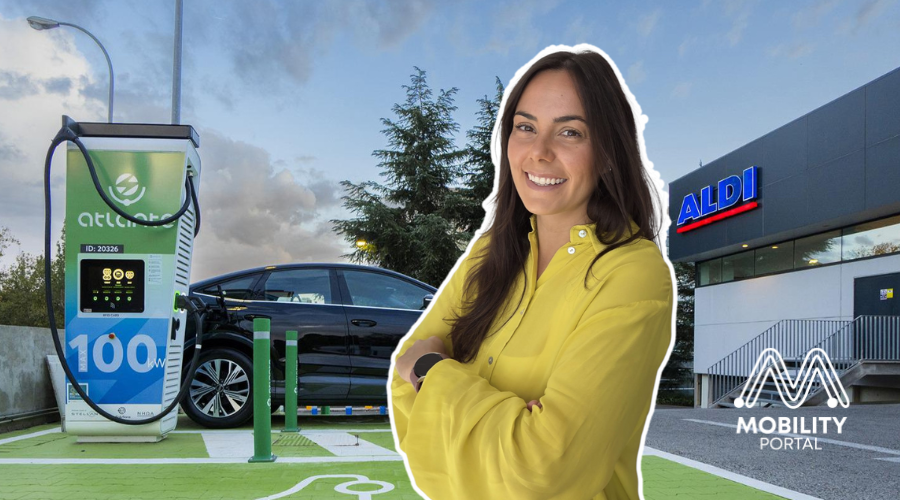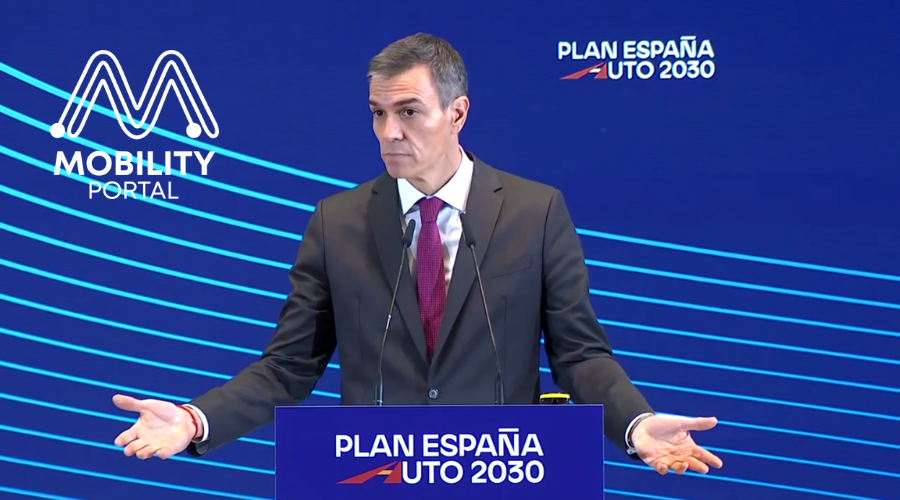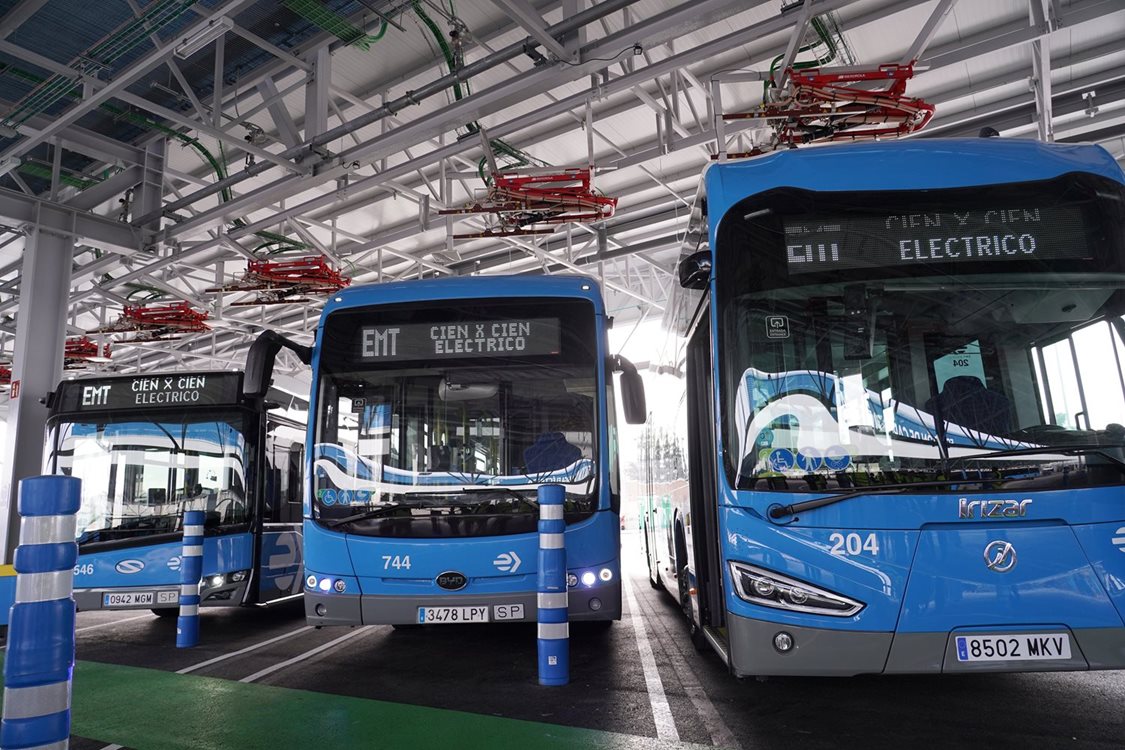Ultra-fast charging is advancing steadily in Germany, driven by the strategic focus of the country’s leading charge point operators (CPOs).
According to recent data published by ChargePlanner and analysed by Mobility Portal Data, eight out of the ten largest players in the sector already have more than 50% of their infrastructure composed of ultra-fast chargers — in the context of exponential growth in the electric vehicle (EV) market.
IONITY and Tesla: Leaders in Ultra-Fast Infrastructure
Tesla Supercharger and IONITY stand out with the highest share of ultra-rapid chargers, as their networks are made up entirely of this technology.
Tesla operates 3,211 active points in Germany. Meanwhile, IONITY operates 1,089.
Other players such as Aral Pulse, Allego and EnBW are also making strong progress in deploying ultra-fast chargers.
In the case of Aral Pulse, a BP energy subsidiary, 71.4% (2,386) of its 3,343 chargers are already ultra-fast.
Allego, for its part, has a network of 2,055 chargers, 62.5% (1,284) of which are ultra-fast.
Public operator EnBW (Energie Baden-Württemberg) leads in terms of volume, with 10,428 points, 6,470 of which (62%) are ultra-fast.
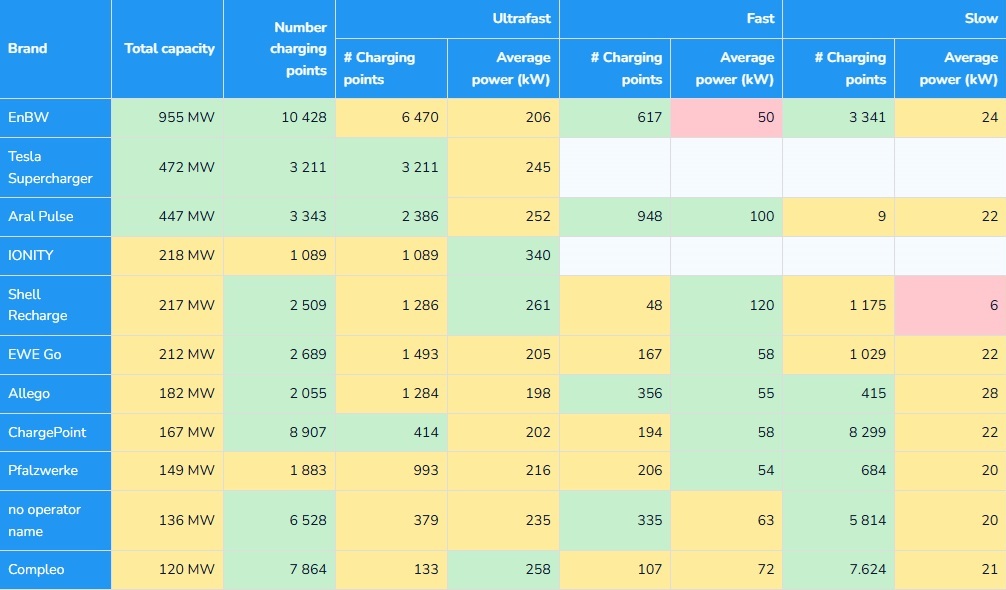
Other operators exceeding 50% ultra-rapid charging
Other notable operators in this segment include EWE Go, Pfalzwerke, and Shell Recharge, each with over 50% of their infrastructure consisting of ultra-fast chargers.
EWE Go reaches a 55.5% share of ultra-fast chargers across its 2,689 active stations.
Pfalzwerke follows closely with 52.7% of its 1,883 devices in the ultra-fast category.
Shell Recharge reports 51.2% ultra-fast chargers among its 2,509 operational points.
Operators with Low Ultra-Fast Charger Density
Conversely, ChargePoint and Compleo — two major operators in terms of infrastructure volume — show very low ultra-fast charger penetration, at just 4.6% and 1.7% respectively.
ChargePoint, with 8,907 deployed chargers, primarily focuses on slower charging technology.
Compleo, with 7.864 points, presents a similar profile, with limited emphasis on fast-charging technology.
Towards a Robust, Fast and Resilient Network
With a clear goal of full electrification by 2030, Germany is on track to become a European benchmark in public charging infrastructure.
The high share of ultra-fast chargers among six of the top ten brands is a promising sign — but it’s not enough.
READ MORE: Germany’s 5 Best and Worst Regions in the Race to Hit 2030 EV Charging Goals
Currently, Germany has around 2.5 million electric vehicles on the road, a figure that includes both battery-electric vehicles (BEVs) and plug-in hybrids (PHEVs). However, projections for 2030 suggest this number will triple to 8.5 million units.
This surge not only signals a shift in mobility but also presents a logistical and energy challenge.
To meet the projected demand, at least 9.3 GW of installed capacity in public charging infrastructure will be required.
At present, that figure stands at just 5.7 GW — only 61% of the needed capacity.
READ MORE
-
Atlante y su “modelo híbrido”: generación, almacenamiento y recarga ultrarrápida para un sistema más resiliente
Atlante acelera su despliegue en España y en diálogo con Mobility portal, Inés Mackey, Chief of Staff de Atlante Iberia define las prioridades de la empresa y su apuesta por la interoperabilidad de la mano de Charge League.
-
Spain Auto 2030: a point-by-point look at the plan set to redefine the eMobility landscape
Spain has entered a new phase in its industrial strategy for electric mobility. The Government has unveiled Spain Auto 2030, a roadmap designed to mobilise €30 billion over the next five years, reshaping the centre of gravity of the electric vehicle market through fresh incentives, a centralised management model, targeted investment in charging infrastructure and…
-
EMT Madrid licita 120 nuevos buses eléctricos: inversión de 79,35 millones y entregas entre 2026-2027
Con esta incorporación, Madrid refuerza su estrategia de descarbonización y consolida una de las flotas eléctricas urbanas más grandes de Europa.




